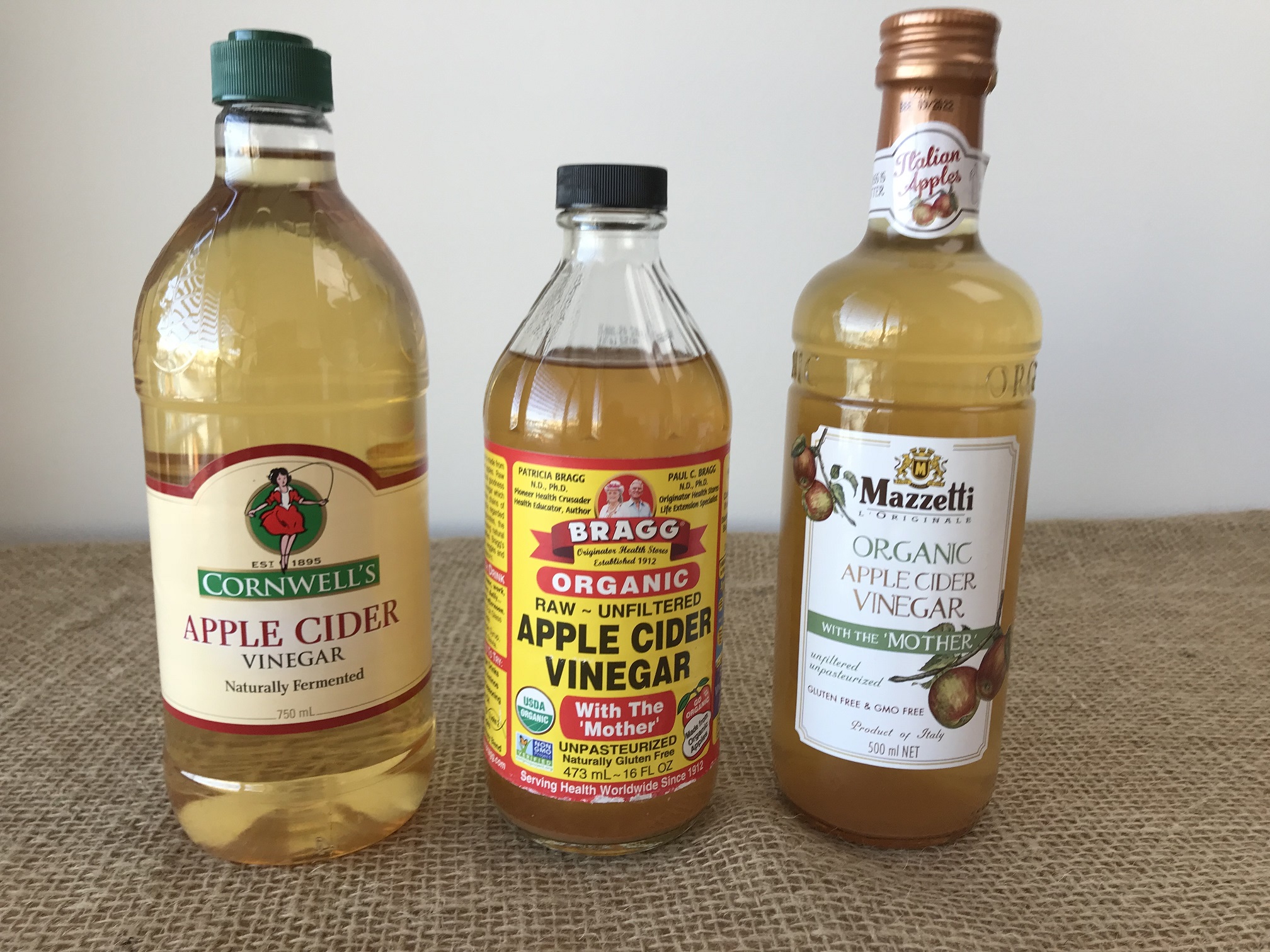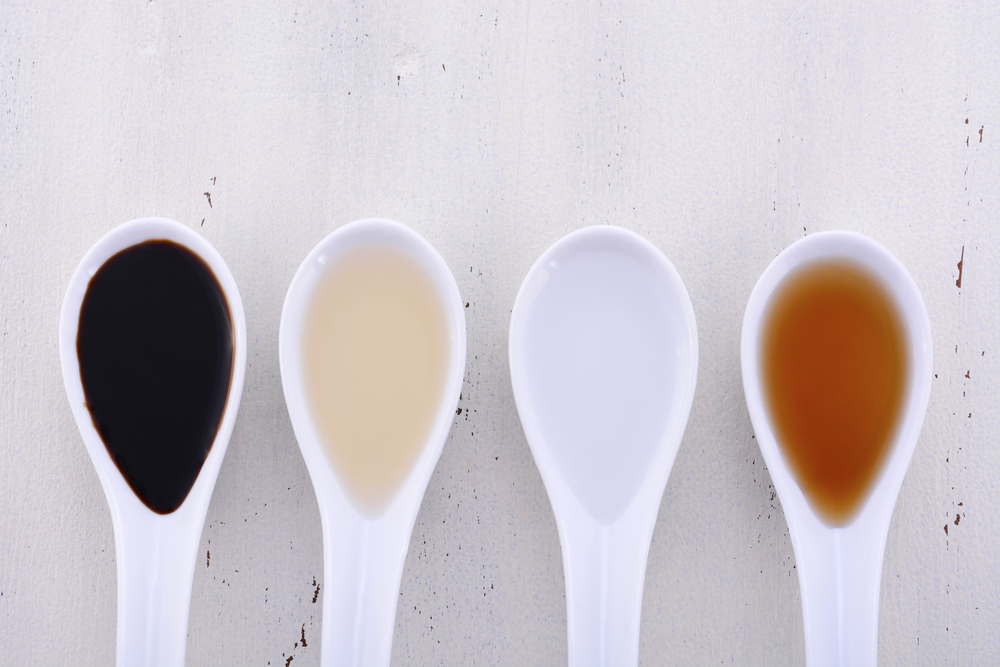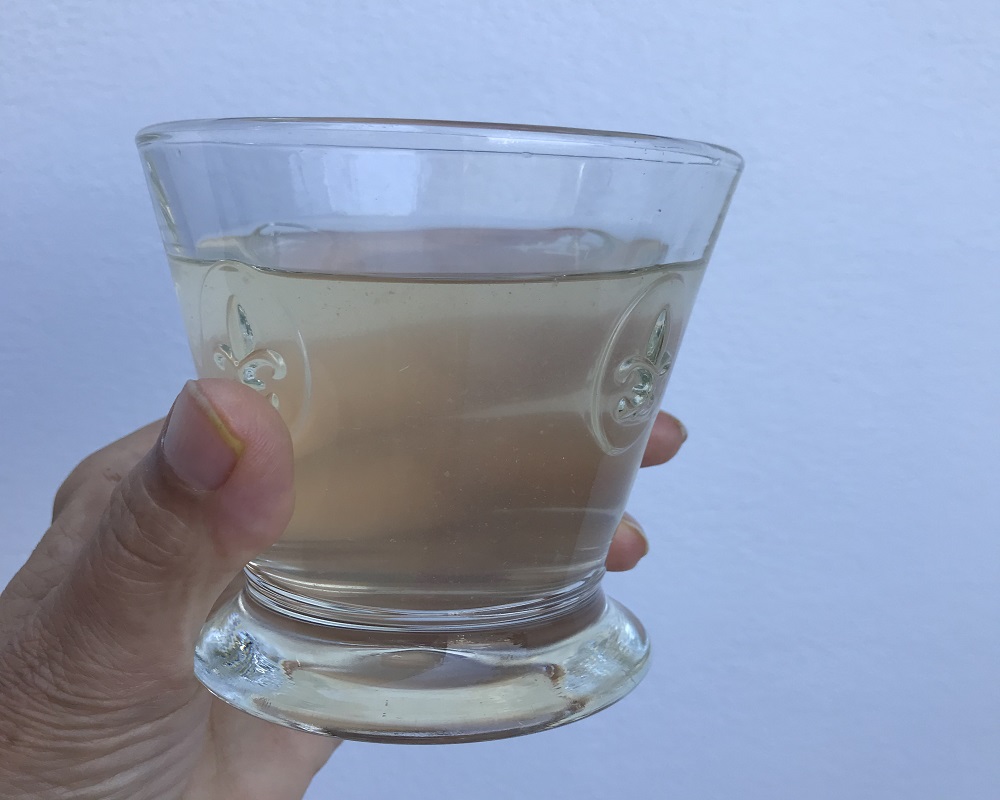- Home
- Posts
- Recently Updated
- Apple Cider Vinegar - a look beyond the hype
Apple Cider Vinegar - a look beyond the hype
Written by Catherine Saxelby
on Wednesday, 14 November 2018.
Tagged: ACV, Apple Cider Vinegar, health, healthy eating, healthy lifestyle, nutrition

Apple Cider Vinegar, or ACV, as it is commonly called in the acronym-addicted world of the net, has long been held to “be good for you”. But is it? And if so, in what way? We take a look at the myths and the research and try to form a clearer picture ...
How is ACV made?
Apple Cider Vinegar, as its name suggests is made from apple cider. In fact, it is a two-stage fermentation process.
The first is made by crushing apples, extracting the juice and adding bacteria and yeast. This starts an alcoholic fermentation where the sugars are converted to alcohol and apple cider is produced.
The second fermentation uses a bacteria, called acetobacter, which converts the alcohol to vinegar. ACV contains both acetic acid – just like common vinegars – and malic acid. Malic acid is found in many fruits and vegetables, not just apples. Some apple cider vinegar is then refined to remove the 'mother' - the mix of proteins, enzymes and bacteria. This refined ACV is clear. If you buy a cloudy one, it hasn't been refined and will usually state on the label that it contains the 'mother'.
Is ACV all it's hyped up to be?
A quick exploration of the search engines will bring up hundreds, if not thousands, of articles claiming that Apple Cider Vinegar will lower your cholesterol, your blood pressure, your risk of having a stroke, the GI of any meal and help you control your blood sugar levels. Not to mention lessen the symptoms of PolyCystic Ovarian Syndrome.
Closer scrutiny, however, shows that although many of these articles assert that these claims have scientific backing, in reality this is not the case. So what is ACV good for and should you be including it in your daily diet?
Where did the hype start?
Legend has it, Hippocrates mentioned it several hundred years before the Common Era. More recently, its fame is said to have started with a doctor in country Vermont in the USA. In 1958, Dr D. C. Jarvis published a book titled Folk Medicine: A Vermont Doctor's Guide to Good Health.
Dr Jarvis apparently recommended ACV as almost a cure-all based on his observation of both his patients and certain farm animals he had treated. His book became a best seller and ACV became a popular home remedy and general health promotant.

Is there any evidence?
This is a tough question. There is a lot of anecdotal evidence but hard, scientific research is hard to find and sometimes contradictory. There are so many claims for ACV that it’s hard to know where to start looking. Some of the claims made include that it’s:
- Anti-viral
- Anti-fungal
- Anti-bacterial
- Anti-inflammatory
- A digestive aid
- Reduces cholesterol
- Helps you lose weight
- Cures a sore throat
- Lowers the GI of foods
- Lowers blood sugar
And many more…
It’s true that ACV has been studied fairly extensively but the studies themselves often have problems such as they have only small (175) or very small (11) numbers of test subjects and the results often appear to contradict one another.
Let's take a look at four of these claims.
-
Claim: ACV lowers your cholesterol and triglycerides
The BBC program Trust Me I’m a Doctor did a small study in conjunction with metabolism researcher Dr James Brown, from Aston University. There were 27 participants, all of whom had healthy cholesterol levels to begin with. They were divided into three groups and were given either - Malt Vinegar, Apple Cider Vinegar or a Placebo. They all ingested two tablespoons (30 mL) of their test liquid, diluted into 200 mLof water – twice a day before two main meals – for 8 weeks. Their cholesterol levels were tested before and after the eight weeks.
The participants in the ACV group saw a 13 per cent reduction in their total cholesterol but the other groups saw no significant change. There were no significant changes in the LDL and HDL, or in triglycerides themselves.
To support this, a 2008 study on normal and diabetic rats found more significant lowering of all the lipid markers, but it’s only an animal study.
-
Claim: ACV reduces blood sugar spikes after eating
Again on the BBC program, the ACV experiment looked at blood glucose (sugar) and found that the ACV group had a 36 per cent reduction in the overall glucose intake into their blood after a meal over a 90 minutes testing period, but that there was no significant change in the Malt Vinegar group. They noted that this was surprising given previous studies done elsewhere had shown the same effect for Malt Vinegar. They surmised that the small number of participants in their study may have skewed the results.
Adding a tablespoon of vinegar to a meal (such as vinegar in your salad dressing) has long been known to lower the body’s blood glucose response to the meal by up to 30 per cent. As far as I know, this applies to ALL vinegars. It’s the acidity from the acetic acid that’s responsible and the resultant low pH is thought to slow stomach emptying. So balsamic, wine or raspberry vinegar all work the same way. And you get the same effect from any acidic food like lemon juice or acidic fruits (grapefruit, kiwi fruit) or pickled vegetables (pickled gherkins, pickled onions).

A 2010 paper reported that the vinegar effect is more pronounced after a high GI meal and not the low GI meals nutritionists suggest for good health. So if you’re already choosing legumes, grainy breads and pasta, you may not notice as much of an effect. But if you're eating high GI foods like potatoes, you may notice an effect.
-
Claim: ACV is helpful in the management of Poly Cystic Ovary Syndrome (PCOS)
Search on the internet and you’ll find heaps of websites saying that a small research study showed that ACV was helpful in 4 out 7 women with PCOS. However, none of them references the research but I managed to find one paper and they only studied 7 women! And yes 4 of them benefited. But it’s hardly significant.
-
Other diverse claims
- The Trust Me I’m a Doctor study also looked at weight loss, inflammation marker levels and overall glucose tolerance and glycated haemoglobin levels. There was no significant weight loss, reduction in the inflammation marker C-reactive protein or overall glucose tolerance and glycated haemoglobin levels in any group tested. Another research group looked at the role of acetic acid - the main acid in Malt and Apple Cider Vinegar - as an anti-hypertensive, or blood pressure lowering agent. They found that acetic acid did play a role in lowering blood and as ACV contains acetic acid it would be reasonable to assume that it may also play a role in this regard. But so would Malt Vinegar. Or any other vinegar.
- It’s said to reduce appetite but in all the studies I found the reason given for that was that it made the people who drank it feel nauseous.
- A Japanese research group tested whether or not vinegar (not ACV) intake reduced body weight, body fat mass, and serum triglyceride levels in obese Japanese subjects. They concluded that “daily intake of vinegar might be useful in the prevention of metabolic syndrome by reducing obesity.” However, a review of ACV by Robert Shmerling, Faculty Editor, Harvard Health Publishing concluded that “In all, the scientific evidence that vinegar consumption (whether of the apple cider variety or not) is a reliable, long-term means of losing excess weight is not compelling. On the other hand, a number of studies suggest that vinegar might prevent spikes in blood sugar in people with prediabetes and type 2 diabetes by blocking starch absorption.”
What’s in ACV?
ACV is a dilute form of acetic acid, usually around a 5 per cent solution. It also contains a small amount of malic acid, a tiny amount of potassium and has a low pH of around 3 - reflecting its acid status. If you buy the organic ACV with the “mother’ then you’ll also get the bacteria that converted the apple juice to ACV.

Should I take it and if so, how much?
If you’re looking to improve your health by ingesting ACV then the research is inconclusive. If you like the taste and prefer it, then by all means use it in your salad dressings but if you’re thinking of drinking it then make sure you dilute it – try 1 or 2 tablespoons or 30 mL in a glass (200 mL) of water - or you could end up damaging your oesophagus and stomach lining. Warning: it tastes pretty awful!
Jemma O'Hanlon
The Good Stuff
The Boring Stuff
© 2025 Foodwatch Australia. All rights reserved
Website by Joomstore eCommerce





